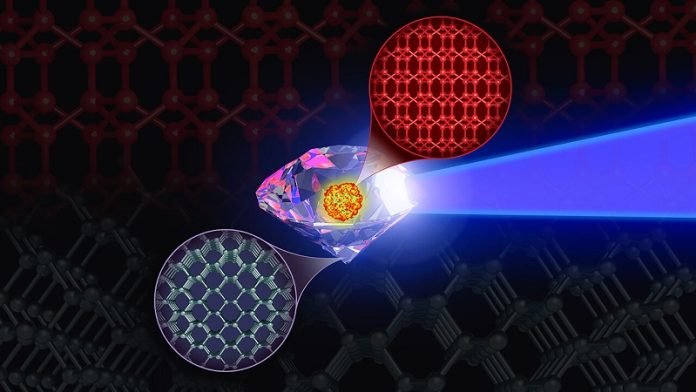
Diamonds are famous for being the hardest natural material on Earth.
However, scientists have predicted there’s something even tougher called BC8, a special form of carbon that could be stronger and more resistant to pressure than diamonds.
This material is believed to exist deep inside carbon-rich planets far beyond our solar system and could revolutionize how we think about durability and strength here on Earth.
Imagine a material that’s like diamond but can handle even more squeeze and pressure without giving in—that’s what scientists call BC8.
It’s made up of carbon atoms arranged in a unique structure that’s different from diamonds but has the potential to be even tougher, offering a 30% greater resistance to getting squished.
Researchers, including Ivan Oleynik from the University of South Florida and Marius Millot from Lawrence Livermore National Laboratory, are excited about the possibilities of BC8.
They’ve been using powerful supercomputers to study how this material behaves under extreme conditions, like those found in the depths of carbon-rich exoplanets—giant planets where the pressure is millions of times greater than what we experience on Earth’s surface.
Their research has revealed that BC8 could indeed be stable here on Earth if they can figure out how to create it.
The structure of BC8 is similar to diamond, with atoms arranged in a way that makes it incredibly hard.
But it’s also different because it doesn’t have the weak spots that diamonds have, which means it could be much tougher and less likely to crack.
Creating BC8 on Earth has been challenging. Previous attempts haven’t been successful because the material can only form under very specific conditions of high pressure and temperature.
But now, thanks to advanced computer simulations, the team has found a narrow window of conditions where creating BC8 might just be possible.
The discovery is important not just for making a super-tough material but also for understanding more about distant planets.
Knowing how materials like BC8 form helps scientists figure out what those far-off worlds are made of and how they evolved.
The next step for the researchers is to try and create BC8 in the laboratory.
They hope to find the right combination of pressure and temperature that allows them to grow a BC8 crystal that can exist outside of these extreme conditions.
If they succeed, it would be a groundbreaking achievement, offering a new super-material for a variety of applications, from cutting-edge technology to everyday tools that last longer and perform better.



